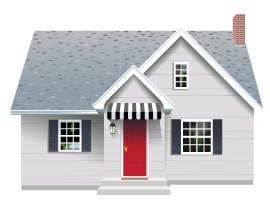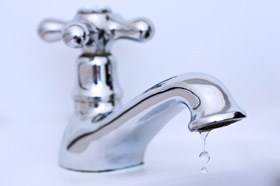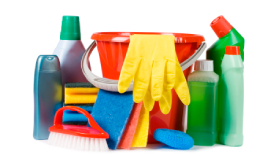| image |
description |
|---|
 |
Triggers in Your Home
Select a topic for more details
|
|

|
Mold grows on damp things such as shower curtains, bath items, tubs, basins and tiles.
What can I do?
- If you see mold, clean it up with soap and water.
- Use exhaust fans or open a window in the bathroom when showering and the kitchen when cooking or washing dishes.
- Fix leaky plumbing or other sources of water as soon as possible.
- Dry damp or wet items within 1-2 days to avoid mold growth.
back to top
|
 |
Dust mites are tiny bugs you can’t see. They live in sheets, blankets, pillows, mattresses, soft furniture, carpets, and stuffed toys, such as stuffed animals.
What can I do?
- Wash bed sheets and blankets once a week. Dry completely.
- Use dust-proof covers on pillows and mattresses.
- Vacuum carpets, rugs and furniture often.
- Wash stuffed toys. Dry completely.
back to top
|
|

|
Asthma can be triggered by the smoke from the burning end of a cigarette, pipe, or cigar, or the smoke breathed out by a smoker. Choose not to smoke in your home or car, and don't allow others to do so either.
What can I do?
- Don’t smoke in your home or car.
- Don’t let anyone smoke near your child.
- Pledge to make your home and car smoke-free - take the smoke free pledge
back to top
|
|

|
Smoke from wood-burning stoves and fireplaces contains a mixture of harmful gases and small particles. Breathing these small particles can cause asthma attacks and severe bronchitis, aggravate heart and lung disease and may increase the likelihood of respiratory illnesses.
What can I do?
- To help reduce smoke, make sure to burn dry wood that has been split, stacked, covered and stored for at least 6 months. Never burn garbage, plastics or pressure-treated wood.
- Have your stove and chimney inspected every year by a certified professional to make sure there are no gaps, cracks, unwanted drafts or to remove dangerous creosote build-up.
- If possible, replace your old wood stove with a new, cleaner heating appliance.
- Consider using a HEPA filter in the same room as your stove or fireplace. Studies indicate that HEPA filters can reduce indoor particle pollution by 60%.
- Visit www.epa.gov/burnwise for more information.
back to top
|
|

|
Cockroaches and other pests such as mice may trigger asthma attacks.
What can I do?
- Keep counters, sinks, tables, and floors clean.
- Clean dishes, crumbs, and spills.
- Store food in air tight containers.
- Cover trash cans.
back to top
|
|

|
Warmblooded animals may trigger asthma attacks.
What can I do?
- Keep pets outside if possible.
- If you have a pet inside, keep them out of the bedroom and off the furniture.
- Vacuum carpets and furniture often.
back to top
|
|

|
Nitrogen dioxide is an odorless gas that can irritate your eyes, nose, and throat and may cause shortness of breath. This gas can come from the use of appliances that burn fuels, such as gas, and kerosene.
What can I do?
- If possible, use fuel-burning appliances that are vented outside. Always follow the manufacturer's instructions on how to use these appliances.
- Gas cooking stoves: Never use these to keep you warm or heat your house. If you have an exhaust fan, use it when you cook.
- Unvented kerosene or gas space heaters: Use the proper fuel and keep the heater adjusted the right way. Open a window slightly or use an exhaust fan.
back to top
|
|

|
Chemical irritants found in some products in your house, such as scented or unscented products, including cleaners, paints, adhesives, pesticides, cosmetics, or air fresheners, may make your child's asthma worse.
What can I do?
- Use these products less often and make sure your child is not around when you use the products. Also, consider trying different products.
- Take great care to follow the instructions on the label. If you use these products, try to make sure that windows or doors are open and that you use an exhaust fan.
back to top
|




